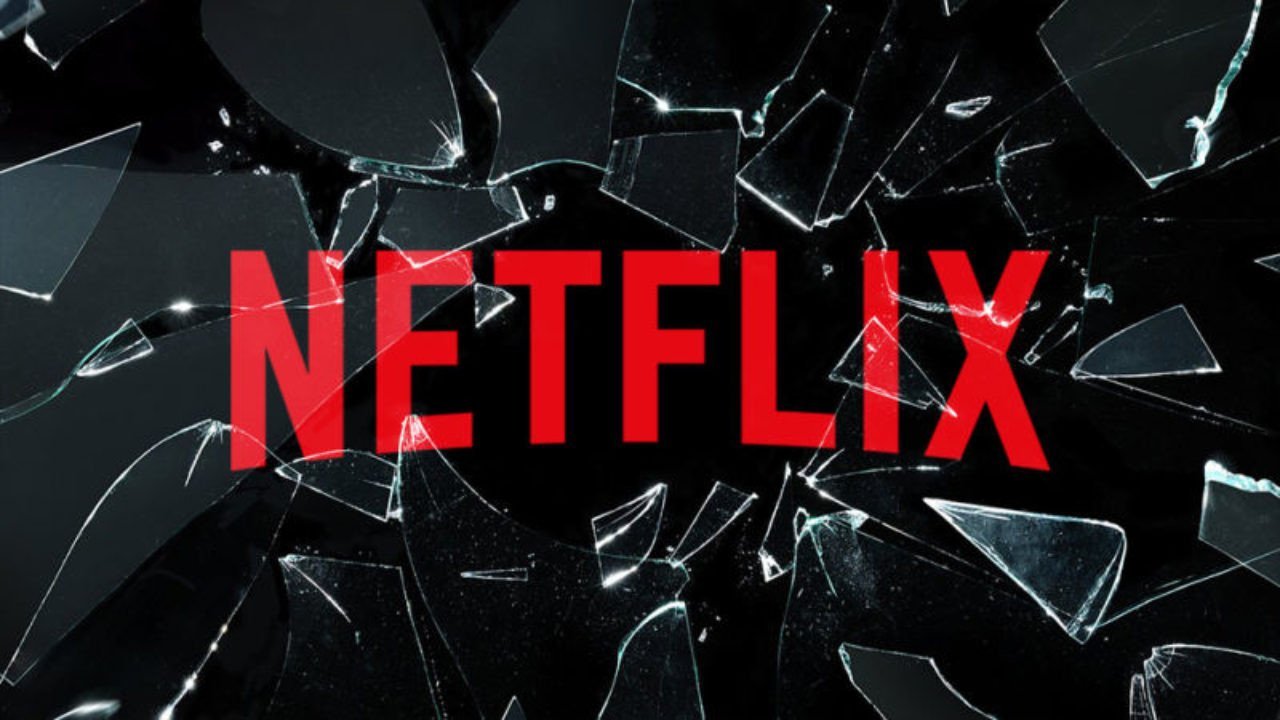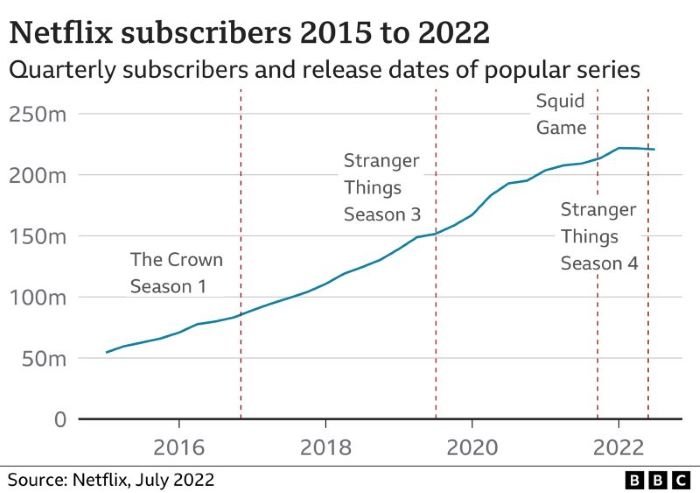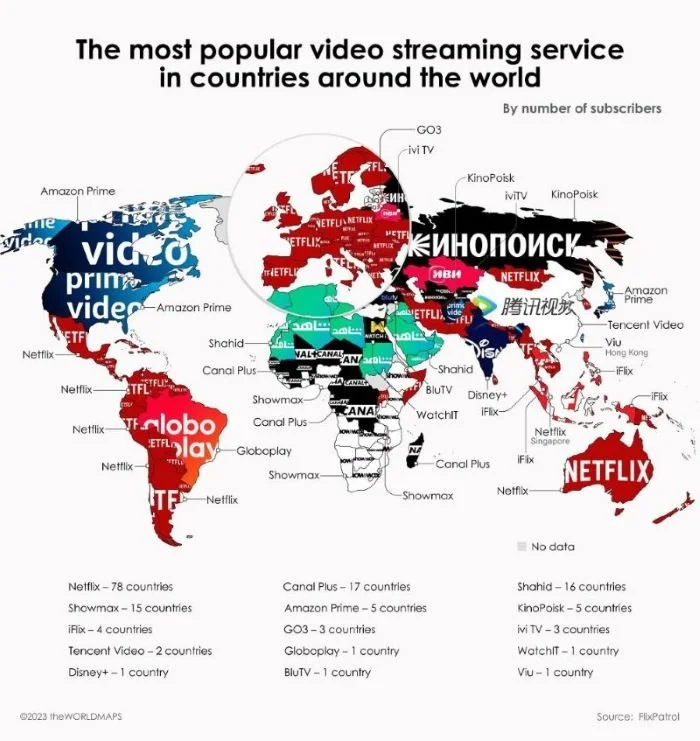Is The Netflix Business Model Sustainable?
Image Source: Teknolojioku
Netflix revolutionized the way we watch television in 2007 when it made the decision to change a failing DVD mail business into a streaming service. It changed the game again in 2013 by making House of Cards, Netflix’s first piece of original content. Twelve years later Netflix has secured 132 Oscar nominations (and 22 wins) as well as a bulging trophy cabinet of other accolades. The business must look extremely secure…or does it?
The Business Model
Netflix has a very simple business model: get people to sign up and keep them paying. But human beings have an extremely short attention span. Despite the millions of titles on offer, after we have steamed through our favorite genres, we will switch off and unsubscribe.
This business model has two main caveats:
Netflix needs more subscribers to increase revenue.
Netflix needs more good shows to achieve the bare minimum goal of maintaining subscriber numbers.
RELATED:
The only way Netflix can bring in more cash is by increasing the number of people on its platform and this ends up severely tying their hands. It affects marketing budgets and production costs. A big-budget show where money has been spent on influencers and advertising is expected to bring in more subscribers, but this is not always true. For example, The Sandman, the most popular show on the platform, did not recoup its expensive production costs, putting it at risk of cancellation. Netflix actually lost subscribers in the first two quarters of 2022, during The Sandman’s release, despite the show’s critical acclaim and widespread praise.
Image Source: BBC News
Quality Vs. Quantity Problem
At the height of Netflix’s reign, during the COVID-19 pandemic, The Tiger King cost an estimated $2 million per episode versus The Witcher which cost $10 million. Both were massive shows which brought in viewers, but it is easy to see which made the biggest impact on Netflix’s balance sheet. However, with viewers demanding shows at an insatiable rate, how does a streaming service fulfill that demand and stay within the confines of its finite budget?
Image Source: FDI Intelliegnce
Netflix has cut their spending on original content by around 5% in 2022 and now it is almost half that of Disney Plus. They are launching more shows weekly instead of dropping them all at once, drawing out the novelty factor. This is a risky move, however, considering they are also no longer the only player in the game. New streaming services seem to be opening every day, and Amazon Prime and Disney are rapidly expanding their catalogs as well as making engaging (and expensive) new exclusive programs as evident in Amazon Prime’s The Lord of The Rings: The Rings of Power series, and all of Disney’s Marvel and Star Wars content. Netflix may be able to fill the gaps with cheap reality and baking shows but against epics such as The Last of Us and The Mandalorian, Netflix may struggle to keep viewers if they cut back too far.
Other Problems
As the worldwide recession hits, subscription services in general may not be a priority as people reduce their spending. Netflix also lost a large chunk of subscribers because of sanctions in Russia as a result of the Ukraine Conflict and this situation does not look like it is changing anytime soon.
Netflix currently has the most user-friendly interface and biggest back catalog, but it is not going to stay that way forever. If any other services merge (e.g. Disney’s attempt at buying Hulu), or if they continue to pump out content faster, then Netflix will find itself in a problematic position.
Changes That Have Already Been Made
Netflix has already made some changes. It recently ended the popular practice of account sharing, under the guise of fraud prevention, although it’s students, military families, and partners who work away from home who will feel the pinch of not being able to log into the family network the most. We have yet to see whether these users become account holders in their own right or simply just move onto other platforms. Until the figures come out, it is anyone’s guess as to whether this has any financial impact on the streaming service.
Netflix has also brought in a cheaper tier of membership with ads, which may be a more attractive option in a cost-of-living crisis than leaving the streaming service altogether. It’s projected that this lower tier could make over $2.2 billion in revenue over the next five years, which is nothing to be sniffed at. Whether we like it or not, this is probably going to be the future for Netflix if it’s going to keep up with the likes of Disney, Apple, and Amazon who have infinitely deeper pockets.
Image Source: Visual Capitalist
Where Do We Go From Here?
New content is the way to keep people on the platform, and where Disney and Amazon have other lucrative businesses to fund the shortfall in the streaming services, Netflix does not. They are currently discussing streaming sports, but this is another area that could prove competitive and expensive.
Netflix has always survived by radically evolving, so it would be wise to boost its ability to make original content by merging with another company that has a bigger capacity to do so like those that will benefit from Netflix’s reach like Warner Bros, Apple TV, or Paramount.
There are likely to be more advertisement levels in Netflix’s future, the gains from doing so are too large not to. That probably means a gradual price rise of the standard membership to allow more “cheap” options beneath. As annoying as these ad breaks are, losing the quality content we’ve come to expect, the opportunities for new actors, directors, and producers, and relinquishing the golden age of television would be far worse.
READ NEXT:
















